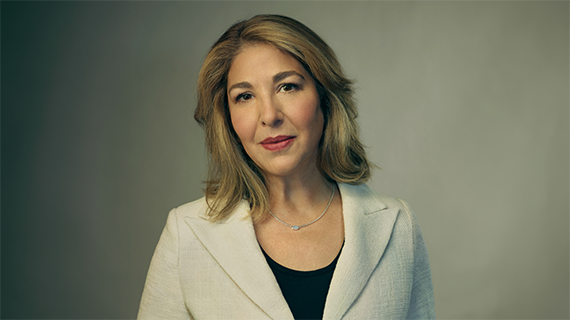By Michelle Keong
While many students spend their summers backpacking through Southeast Asia, Lisa Davidson traveled to Cambodia for an entirely different reason — she wanted to learn about children’s rights and labour, not from a textbook, but in the flesh.
She remembers walking down a dirt road on a scorching hot day. A group of men sat on one side playing musical instruments — the brutal scars of land mines present on their bodies. Up ahead, young children swarmed tourists, begging for survival.
While many university students spend their summers backpacking throughout Southeast Asia, Lisa Davidson, who graduated with a BA in honours Anthropology in 2007, travelled to Cambodia for an entirely different reason. She wanted to learn, not from a textbook, but in the flesh.
Fascinated by readings in her anthropology classes, Davidson went to the Philippines, Thailand, Cambodia, Malaysia, and Indonesia in 2006 as part of a self-directed pilot study.
Seeing that impoverished scene in the outskirts of Siem Reap inspired Davidson, 32, to lay the groundwork for her graduate studies.
Through recorded interviews and field notes, Davidson witnessed Cambodia’s poverty and the child labour that seems to go hand-in-hand with it.
“I don’t know exactly what it was, but when I read more about the history and when I spoke to the people, they were just willing to talk so much to me,” Davidson says.
From chatting with street children, to meeting the locals while taking public transit, to interviewing aid workers with non-governmental organizations (NGOs), Davidson saw living proof of the genocide that wiped out 1.5 million Cambodians in the late 1970s.
“One director of an NGO that I spoke with, whose family was executed because they had liaisons with the former government, fled the country with 29 of his neighbours at the age of 14,” Davidson says.
As the director of an NGO, that aid worker now provides free education for impoverished children in the Angkor Thom and Puok District of Siem Reap.
In the organization’s three schools, Davidson was able to talk to children, who were invited from the local villages to receive an education while refraining from physical labour.
In Cambodia, with an approximate population of 13 million, of which 50 to 60 per cent are believed to be living in poverty, child labour is a necessary part of a family’s survival, notes Davidson, who investigates the issue in her research.
In an account relayed to her by a representative from one of Cambodia’s largest human rights NGOs, Davidson learned how child labour is often integrated into family labour. In a factory, the children would often carry hot bricks from one area to another.
“They realize that the child’s labour is part of the entire family unit, because the family gets paid per brick that they make. So the more family that helps, the more bricks they can produce, the more they get paid. So it’s not just child labour as individuals, but as part of a family,” Davidson says.
She hopes to bring a different dimension to the way child labour is generally viewed. “I view it as a response to their poverty. It’s a part of their history of what the country has faced.”
She vividly remembers the scene of young children crowding tourists, begging them to buy bracelets.
“They’d come running up to you saying, ‘Please buy one bracelet for one dollar.’ And as you keep walking, they’d go up to 50,000 bracelets for one dollar,” recalls Davidson. “In their voice you can hear the pleading — anything, just anything.”
The fortunate children who attended NGO schools revealed their aspirations of becoming doctors, teachers, tuk-tuk drivers, and tourist guides. “The children in the schools, they have their desires, they have their plans, they have their dreams of the future. It’s a difficult situation because you can see where they’re coming from versus the opportunities that are there,” Davidson says. “You don’t want to hamper their dreams.”
NGOs recognize these realities and offer sewing programs for girls — exporting clothing is a big trade in Cambodia and many girls are hired as factory workers in the sweatshops, says Davidson.
“Here we have all these negative connotations of sweatshops and labour, and it’s true, but for a lot of women that I spoke with, it is a job, and it is a necessary job.”
From 1975 to 1979, Cambodia was ruled by the Khmer Rouge, responsible for the genocide of an estimated 1.5 million people through execution, starvation, and forced labour. In terms of the number of people killed as a proportion of the country’s population, the Khmer Rouge is recognized as one of the most lethal regimes of the 20th century.
Davidson’s hands-on approach to her undergraduate research will provide an interesting perspective, says Assistant Professor William McKellin, who supervised her research and honours thesis.
“I think she’s one of very few people doing work like this,” says McKellin, who specializes in medical, linguistic, and cultural anthropology. “Her work is based on firsthand research, interviews with people, and observations. This will show directly in her honours thesis and some of the understandings that she will have on emerging notions of kinship and family in Cambodia.”
Davidson, whose definition of child labour is based on Cambodian NGO standards, thinks of it as any kind of employment or work that children undertake. She also recognizes that each situation depends on the needs of the family unit.
“I found this really interesting because the anthropology of childhood is very, very new. There’s very little information,” Davidson says.
With the majority of anthropological research on Khmer families in Cambodia conducted before 1975, Davidson hopes to bring a fresh perspective to what she calls an old situation.
She would like to return to Cambodia in preparation for graduate studies in anthropology at the University of Toronto. She would also like to continue her fieldwork at the PhD level.
“It’s nice to have people make decisions based on real experiences and having seen some of the issues firsthand,” McKellin says.
“In text, it’s hard to see some of the dynamics and the way people subtly ply their understandings in different situations. So I think having been there and seen things firsthand, she can see how people apply different meanings and different contexts.”
“There’s a blending of what I’ve learned here as academic groundwork and fieldwork,” adds Davidson. “When you read an article it doesn’t seem complex. But when you’re there in the field and you start seeing all these factors that come into play, you can see the complexity of the situation.”
She says: “It humanizes everything that I’ve done at UBC. It really adds the humanity of what’s involved.”


